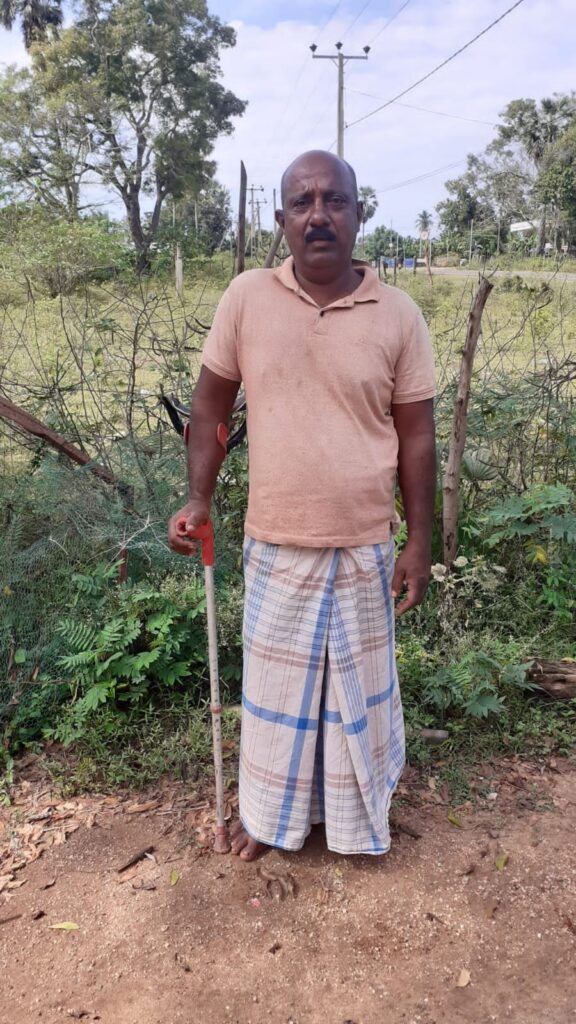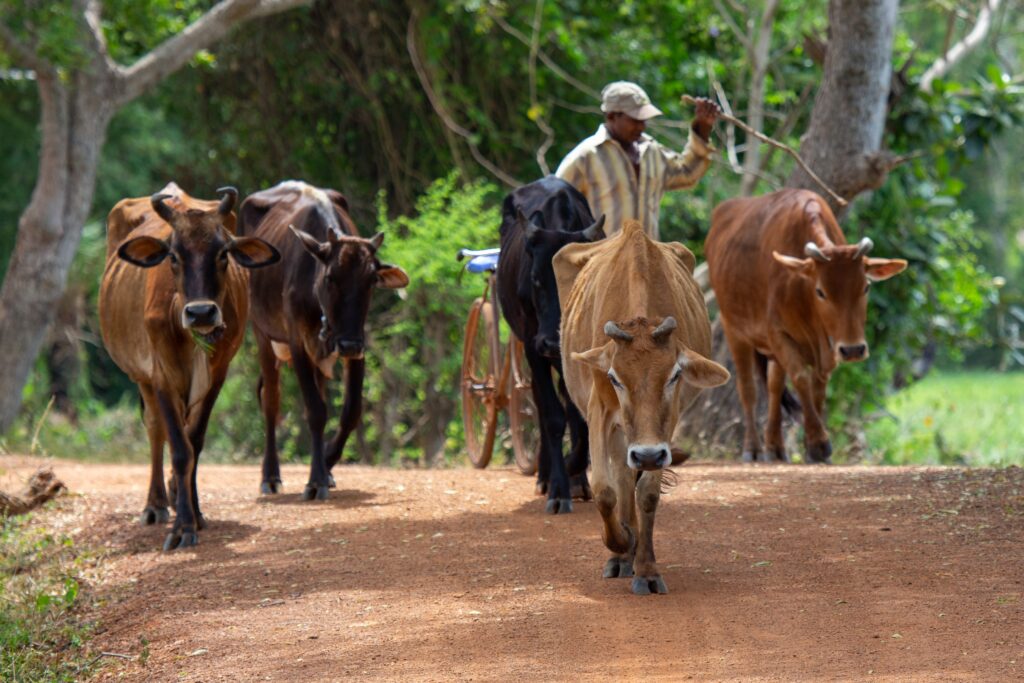In December 2022, Sri Lanka experienced unusual weather conditions, with temperatures dropping below the average levels for the month. Typically, December is characterized by dry and warm weather conditions in the country, with average temperatures ranging between 23-30°C. However, on the 8th and 9th of December 2022, the nation witnessed an unprecedented drop in temperature to about 17°C, which was severe in the Northern and Eastern regions of the country. This surprising phenomenon was attributed to the combined effects of smog and winds caused by a cold front, resulting in cold weather conditions. The situation was further aggravated by the polluted air from neighboring India, which caused hazardous air quality and posed health risks to the public.
The sudden drop in temperature, combined with the adverse impact of pollution, also had significant disruptions on daily life throughout the country, especially in livestock production in the Northern and Eastern parts of Sri Lanka. Livestock farming, including cattle, buffalo, and goats, is a significant source of income for rural communities in the area. But in early December 2022, due to the sudden and drastic change in weather the livestock, accustomed to a dry climate in the Northern part of Sri Lanka, were left shocked and struggling to adapt to the unexpected change.
The northern dry zone of Sri Lanka was once a thriving agricultural hub with plenty of natural resources. However, it became one of the hot spots of the 30-year civil war that engulfed the nation. The war, coupled with extreme environmental conditions such as a hot and dry climate with average maximum high temperatures ranging from 28°C to 38°C throughout the year, and low and variable rainfall, resulting in arid and semi-arid landscapes dominated by drought-resistant vegetation has prevented the region from developing, leaving residents with low living standards.
In December 2022, the impact of the unusual weather conditions was felt more acutely in this area, which had already been struggling with the effects of war and environmental conditions. The sudden change in weather and its impact on livestock farming added to the challenges faced by the region, exacerbating already difficult living conditions.
Experiencing hardships
Subramaniyam Kanahendran is a 53 year old resident of war-torn Nedunkerni in the Vavuniya District, Northern Province of Sri Lanka. He faces numerous challenges on a daily basis. Although he is physically disabled, he is the pillar of support for his family, including his widowed daughter. They have been severely affected by the nation’s economic crisis, which was marked by high inflation and declining purchasing power. In the face of this crisis, agriculture essentials such as fertilizer became more expensive, resulting in a significant decline in their rice production yields.

Amila Lankapura,
In December 2022, an unexpected weather event marked by a drastic drop in temperature of about 17°C and hazardous air quality added another layer of hardship to their lives. Having never experienced anything like this before, these conditions devastated their primary source of income – livestock. Despite the hardships experienced by Kanahendran and his family, they remain hopeful that the future will be brighter for them.
The inspiring journey of Kanahendran
Kanahendran has had a passion for cattle rearing, which started in 2002. Sadly, the war caused him to lose his entire herd. In 2010, he restarted his hobby by purchasing four milking cows with his savings and leasing. By December 2022, he had built a herd of 45 cattle, mainly local breeds adapted to the arid climate, as well as 20 goats and a small flock of chickens. However, the sudden weather event was a challenge for Mr. Kanahendran and his animals.
In early December 2022, Kanahendran faced his first abnormal cold weather event as a livestock farmer. His animals, particularly the cattle, exhibited strange behaviors he had never seen before.
Kanahendran said, “I noticed the cattle shivering as we did with a high fever. They seemed to have respiratory problems and gradually lost consciousness.”
With the guidance of veterinary officers, Kanahendran lit fires near the animal sheds to warm his cattle, who were exhibiting unusual behavior due to the sudden weather change. The process was challenging, with heavy rains making it even more difficult. Family members and fellow farmers pitched in to help. Despite their efforts, Mr. Kanahendran suffered both economic and non-economic losses as a result of the livestock’s abnormal behavior.
Reflecting on the experience, Kanahendran said, “We suffered a lot to save our cattle, and there are no words to describe the pain and misery we endured. When I went to the cattle shed on the very first day of that cold period and saw about 11 cattle had died, I was devastated and in pain. I felt really sad, more so than the monetary loss, since I had lost them forever. I care for my cattle with lots of love and treat them well.”
Cold shock-related loss & damage
The loss of a herd is a devastating event for any farmer, and Kanahendran was no exception. On that fateful day, 11 cattle died, including the only stud bull for the entire herd, three milking cows, three pregnant cows, a one-and-a-half-year-old cow, and three calves. The direct losses caused by the death of cattle amounted to almost 20 times the family’s average monthly income.
Kanahendran’s cattle were primarily raised for milk production, and the milk corresponding to the dead herd was lost. This loss had a severe impact on the family’s income. The incident also affected many other cattle, causing them to become underweight. Unable to manage them, Kanahendran had to sell them far below their market value, resulting in further financial loss for the family. The tragedy also claimed a few goats, though their negative impact was comparatively less.
Kanahendran’s family faced a difficult challenge while dealing with the loss of their cattle. Burial of the animals during a severe rainstorm was no easy feat. Despite the cost and effort involved, the family considered it a priority, given the emotional and cultural significance of cattle. For them, burying the dead animals was a way to honor and respect their bond with the herd.
According to Kanahendran, “I could not bear street dogs biting the bodies of dead cows, so, I didn’t mind spending a lot of money just to bury them as these cattle were my children.” His expressions, though unseen, reflected the emotional toll the incident had taken on his family.
A closer look at the causes of sudden livestock deaths
Kanahendran’s observations about the causes of the cattle’s death align with scientific explanations. His cattle are usually managed through extensive grazing, but during the rice farming season, the animals are restricted to the nearby forest and protected areas. Open grazing systems often do not provide enough nutrition for the animals, and this condition is further aggravated during rice cultivation season. The low nutritional status of the animals leaves them unable to cope with temperature fluctuations outside their usual ranges. It has been confirmed that animals die during abnormal weather conditions primarily due to poor nutritional status resulting from inadequate management. Kanahendran’s experience highlights the importance of proper animal management and the need to consider climate change’s impact on animal husbandry.
Building resilience for livestock farming
The story about Sri Lanka’s unprecedented cold spell in December 2022 provides an alarming insight into the potential effects of climate change on local communities. Due to this unexpected event, which was triggered by a cold front, smog, and polluted air from India, the nation entered an unusually frigid state. An average December temperature of 23-30°C plummeted to a low of about 17°C. Across the nation, the sudden and drastic change in weather caused havoc with livestock farming, a significant source of income for rural communities, particularly in the northern and eastern parts.
Mr. Subramaniyam Kanahendran and other farmers in similar regions must prepare themselves for future extreme weather events in light of this harsh reality. Enhancing the nutritional management of livestock is a critical component of this preparedness. To accomplish this, it is necessary to ensure that the animals receive sufficient feed throughout the year. In addition, they need ample outdoor grazing opportunities. Underweight animals should also be provided with special dietary plans. Moreover, farmers must become aware of the risks associated with climate change and extreme weather events. Nutrition management should be a priority in livestock and veterinary extension programs. There should be an infrastructure developed to ensure that cattle sheds are comfortable and equipped to withstand extreme weather conditions. In addition, compensation mechanisms should be put in place to assist farmers in recovering their losses and regaining their financial stability.
Farmers can increase their resilience to adverse weather shocks by adopting such measures. Amid climate change, farmers will need to adapt to new challenges and develop proactive measures to ensure the well-being of their livestock and families.
Interviewer’s perspective
As an interviewer, I found Mr. Subramaniyam Kanahendran’s story and the challenges his community faces due to the unprecedented cold spell in Sri Lanka to be deeply moving. Their hardships, ranging from the physical loss of their cattle to the emotional distress caused by the sudden weather event, served as a stark reminder of the human impact of climate change. Despite numerous setbacks, Mr. Kanahendran’s resilience was truly inspiring. The great bond between farmers and their livestock can be seen in his devotion to his cattle, which he often referred to as his “children”. It also underscored the urgent need for more proactive measures to build resilience against extreme weather events, as well as the need to provide these communities with the resources and knowledge they need to cope with an uncertain climate future. The experience has left me with a deep respect for the resilience of farmers like Mr. Kanahendran and a renewed commitment to bringing their stories to light.
The interviewer
Amila Lankapura, a University lecturer and early career academic, has a solid academic background and extensive experience in teaching, research, and outreach. His research interests focus on sustainable community development in rural and agrarian communities in Sri Lanka, as well as in similar contexts in South Asia and Asia. Mr. Lankapura has a special interest in the interaction between climate change and rural development, showing a keen interest in building climate-resilient communities. In the face of climate change and other natural disasters, he is passionate about improving the living conditions of rural communities. In combination with his expertise, this passion makes him the ideal candidate to conduct this story-based study. The depth of his knowledge and empathetic approach to the subject matter enables him to provide an in-depth exploration of how extreme weather events impact local farming communities in real life.
